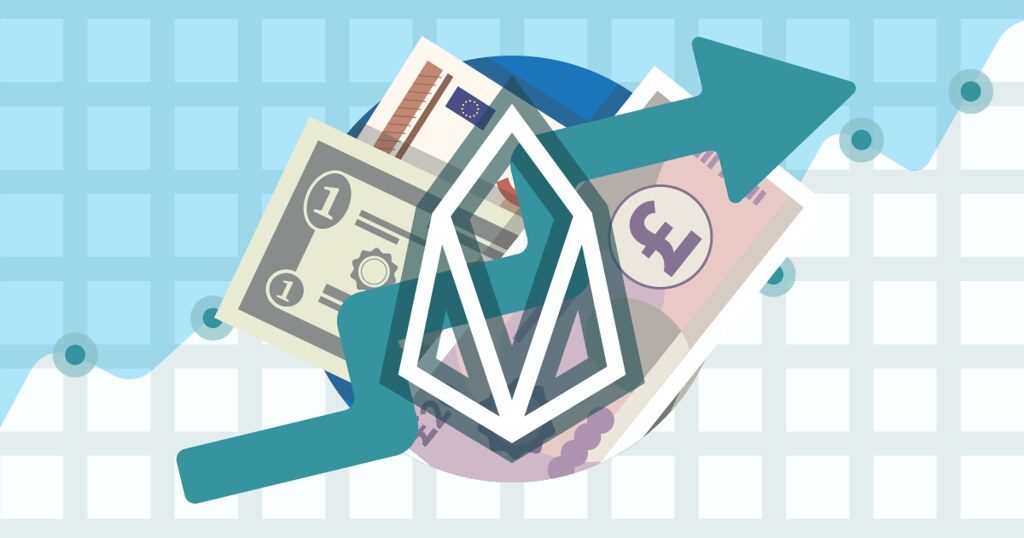EOS: From ICO to Leading Crypto

New to the crypto trend? The first thing that everyone in this business needs to do is, of course, research.
In this active business, make sure that you are stocked with data on new cryptos, mining sites, ICOs and many more! You can do this by talking to actual investors, attending forums, reading official information and even scrolling down a cryptocurrency blog.
Research ensures that you certainly won’t be fooled by schemes. You also will be more likely to invest in good crypto deals and find out about up-and-coming cryptos before their prices skyrocket!
Check out this easy to understand guide on an ongoing blockchain technology that aims to go past what other cryptos have! Join the hype and learn more about the EOS.
History
EOS was first introduced in 2017 by the private company, block.one. The entire platform itself came from an Initial Coin Offering system, where they launched lots of coins to be switched for funds of this blockchain project.
This company is co-founded by Brendan Blumer, an entrepreneur known for his works in the crypto world and links to the world of MMORPG and real-estate. Block.one initially released about a billion dollars to support its software which was then repaid by tons of other investors. It raised about $4 billion after a year even without a product.
EOS broke an ICO record that day for just having that perfect idea, giving hope to other developers and startups. After a year of its launch, EOS landed 7th on the world’s crypto market cap. In 2020, the token keeps its position at the top ten cryptos as the 8th.
What Makes EOS better?
If you’re reading this, you must already know Bitcoin— the cryptocurrency that introduced the blockchain technology to the public and allowed the birth of altcoins. Bitcoin also showed decentralization or, in the simplest terms, the capacity to work without third parties such as banks.
Another crypto that you might know about is the Ether (ETH) that hails from the Ethereum (ETC) platform. The ETC added a new feature to cryptos which gave smart contracts function to its software. This contract certifies that the given conditions of the user are satisfied before completing its process automatically, boosting the security of cryptos and giving its programmable feature.
EOS combines both in its own free and fast-loading platform.
● Fast
This crypto platform aims to cover millions of processes per second. That is multiple times faster than the current ETC with 15-25 transactions per second. Currently, the platform fulfills 4000 per second.
● Free and Decentralized
Made through ICOs, the platform EOS.IO is free from all kinds of fees. When you hold even a single token or a large percent of EOS, this means that you own that part of the network, making all your transactions free of charge!
Efficiently working for all the users of EOS, the system and platform functions solely for the smart contracts that you place on your token.
● Usage of Dapps
The EOS platform allows its users to create Dapps or Decentralized Applications. These apps enable people to share all kinds of information while staying private. Unlike current apps, no one holds the software and has access to your data.
With the scalability, storage and other features of EOS, it can serve millions of users, opening Dapps to more mainstream use.
● Governance and Inflation Value
EOS does not have miners. Instead, it has its producers that can trigger the inflation of EOS tokens. However, they are not the ones with absolute power as most users of the platform can veto a producer that asks for too much inflation or too often.
How EOS is Produced
The inflation of tokens was lightly touched earlier but here is a more in-depth explanation of how blocks of EOS are produced.
Like in a democratic country, EOS uses its Delegated Proof of Stake (DPoS) that ‘nominates’ its top 21 block producers who will be ‘elected’ by users of the faction. There are other producers aside from them.
With about 20 to 50 block producers of EOS, only two blocks are produced every second. These producers are paid automatically by the EOS platform, without any kind of fee from the users. In return, producers are required to function on time (or be temporarily removed from the network), keeping the platform in an efficient state.
Tokens inflate as the blockchain continues to grow with standard inflation of 5%. To counter this, the users can vote for some of the blockchains to be removed, making way for new tokens, Dapps and a wider space for more uses of the EOS.
In Conclusion
The EOS crypto developed as a dream come true for block.one and their developers. Although it stands far from its goal of reaching millions of transactions per second, the platform continuously reaches for the same goal using the same standards they had set at the beginning of their race.
Feel free to learn more about EOS and other cryptos as you dive into this vast world of new technology.
Disclaimer: This is a paid post and should be considered as news/advice.
